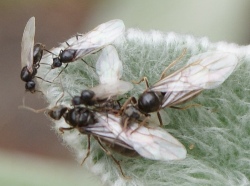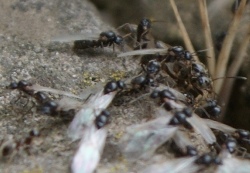There have been numerous reports up and down the country of swarms of flying ants taking part in their annual mating ritual.
These reports have occured in places as far apart as London, Scotland and the Midlands. The number of ants taking to the wing has been so large as to cause alarm and distress to people who have encountered them.
|
One lady in Edinburgh said she was unable to get out of her car because there were so many ants covering her vehicle and flying around the doors. She said: “I felt terrified. It was really horrible. When I finally got out of the car I was covered in them and I felt they were going to bite me.” As pest controllers will know, this behaviour is quite normal. Most of the ants encountered are likely to be black ants – Lasius niger – but many ant species behave in a similar manner. Ants within existing colonies wait for the right set of climatic circumstances – usually a period of warm dry weather followed by rain, or as is the case this year, a thunderstorm. The afternoon is the favoured time, as the queens and the winged workers take to the skies using warm-air thermals to spiral up to thousands of feet in the air. High in the sky, the queens mate, then drift to the ground – which can be miles from where they originated – dig into the moist ground and so start a new colony. Insect expert, Clive Boase of the Pest Management Consultancy said: “The emergence of these swarms often occurs in a co-ordinated manner with nests erupting together over large geoghrapic areas, as they have experienced the same weather conditions. The winged adults and lesser numbered winged queens fly-off quite quickly, leaving the worker ants running around quite frantically on the ground. A give-away sign of swarms rising in a thermal is large numbers of birds – usually starlings and seagulls – swooping around within a tight area picking-off the ants as they rise.” |
|
|



